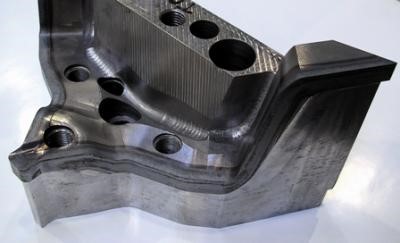Lasers for hardening
Laser hardening is one of the modern and time effective processes of surface treatment. The main advantage of laser hardening is velocity of hardening process. To harden the workpiece, the laser beam warms outer layer to just under the melting temperature, once the desired temperature is reached, the laser beam starts moving. Laser continuously warms the surface in the direction of advance. As soon as the laser beam moves away, the hot layer is cooled very rapidly by the surrounding material in process known as self-quenching. Thanks to the low heat input, distortion is kept to a minimum and the cost of reworking is reduced or eliminated entirely. The hardening depthvis typically from 0.1 to 1.5 mm. Greater hardening depth requires a larger volume of surrounding material to ensure that heat is dissipated quickly and the hardening zone cools rapidly enough. Otherwise additive cooling is required.
Laser hardening
Nd:YAG, Fiber lasers and today also high-power diode lasers can be employed for laser hardening.
Combination of scanning optics with robotic systems allow to harden partially-chosen area or planar trajectory with low heat input. It is useful also for difficult 3D models. Laser hardening will continue to be used mainly in special applications such as hardening three-dimensional tools and components that cannot be hardened using other methods or for treating bearing and bushing surface.
Advantage of laser hardening:
- Low space demands of system
- Quick return of investments
- Low heat affected zone
- Low distortion
- Partial hardening
- Hardening of cast iron
- Replacing of carburizing and nitriding by laser hardening
- Low energy demands
- Easy integration
- environmetally firndly technology
Contact us for more information about laser hardening.



Comments are closed.